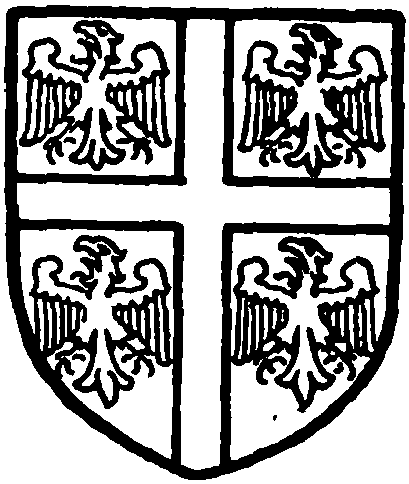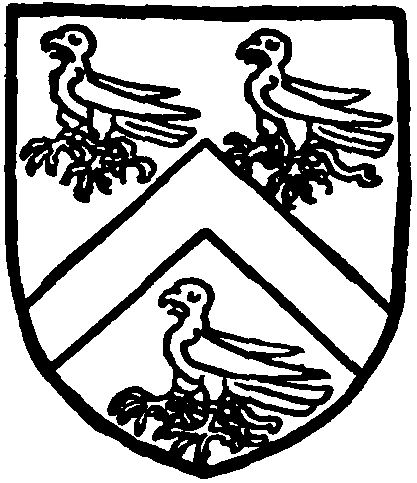A History of the County of Hampshire: Volume 4. Originally published by Victoria County History, London, 1911.
This free content was digitised by double rekeying. All rights reserved.
'Parishes: Brown Candover', in A History of the County of Hampshire: Volume 4, ed. William Page (London, 1911), British History Online https://prod.british-history.ac.uk/vch/hants/vol4/pp183-184 [accessed 7 February 2025].
'Parishes: Brown Candover', in A History of the County of Hampshire: Volume 4. Edited by William Page (London, 1911), British History Online, accessed February 7, 2025, https://prod.british-history.ac.uk/vch/hants/vol4/pp183-184.
"Parishes: Brown Candover". A History of the County of Hampshire: Volume 4. Ed. William Page (London, 1911), British History Online. Web. 7 February 2025. https://prod.british-history.ac.uk/vch/hants/vol4/pp183-184.
In this section
BROWN CANDOVER
Candefer (ix cent.); Candevre (xi cent.); Brunkardoure, Candevre Abbatis (xiii cent.); Candovere, Brunecandevere (xiv cent.).
Brown Candover parish lies 5 miles north from Alresford and contains 2,810 acres. The village lies along the main road from Winchester to Basingstoke in the valley of the Itchen, which intersects the parish from east to west. From the river-valley the ground rises steeply towards both the north and south, a height of 539 ft. above the ordnance datum being reached in the north. The modern church of St. Peter, standing on the right bank of the Itchen, was built in 1845, chiefly at the expense of the first Lord Ashburton, replacing a church destroyed by fire which hadstood about half a mile distant on the left bank of the river. Candover House is situated nearly opposite the site of the old church in large grounds sloping down towards the river, and is now the residence of the Hon. Frederick Arthur Baring, the younger brother of the present Lord Ashburton. The Rectory House was on the opposite side of the stream and road and was entered through a small garden. The National school was built in 1850 and enlarged in 1854. The soil is chalky loam and gravel, the subsoil chalk and gravel. The chief crops are wheat, turnips and oats. The parish contains 1,226 acres of arable land, 734½ acres of permanent grass and 363 acres of woods and plantations. (fn. 1) Part of Northington parish, with a population of 27, was transferred to this parish for civil purposes only in 1888. (fn. 2)
Manor
The manor of BROWN CANDOVER belonged to the Crown till the beginning of the 10th century, (fn. 3) when it was granted by Edward the Elder to the New Minster afterwards known as Hyde Abbey. (fn. 4) In 1086 it was farmed out at £10, although only worth £8. (fn. 5) The manor continued in possession of the abbey till the Dissolution, (fn. 6) when it came into the hands of Henry VIII, who granted it in 1539 to Sir William Paulet Lord St. John. (fn. 7) Sir William Paulet was created Marquess of Winchester in 1551, and twenty years later sold the property to Roger Corham and Mabel his wife. (fn. 8) This Corham leased the farm of Brown Candover to various tenants for an annual rent, and in 1587 an interesting case was heard concerning an annuity of £20 granted by the late Marquess of Winchester out of this estate, the claimant Robert Halliwall bringing an action for arrears of annuity against the then tenants (Knight, Fisher and Woodward), and they in turn demanding payment on the part of their landlord Roger Corham, (fn. 9) on the plea that 'he had got a good bargain of the property from the late Marquis.' (fn. 10) Roger Corham died in 1600 and was succeeded by his son William, (fn. 11) who forty years later, in conjunction with his son Roger, dealt with it by fine with Francis Fortescue and Thomas Travers. (fn. 12) Roger was in possession of the manor in 1641, conveying it in that year to Henry Sandys and others, probably in trust for John fifth Marquess of Winchester. (fn. 13) The marquess was a zealous loyalist and forfeited all his lands, the manor of Brown Candover being purchased from the Treason Trustees for Walter Strickland and four others. (fn. 14) However, on the accession of Charles II he was restored in his possessions, (fn. 15) and died seised of Brown Candover in 1675. (fn. 16) The manor then passed to his third, but second surviving son, Francis Paulet. Francis dealt with it by recovery in 1676 and 1685 (fn. 17) and died in 1696. (fn. 18) By the beginning of the 18th century Brown Candover had passed into the possession of the Worsleys of Appuldurcombe and Chilton Candover. Sir Robert Worsley, bart., presented to the church as lord of the manor in 1709, (fn. 19) and from this date the descent of Brown Candover follows that of Chilton Candover (q.v. infra), the present owner being Francis Denzil fifth Lord Ashburton.

Corham. Argent a cross sable between four eagles gules.

Worsley, baronet. Argent a cheveron between three falcons sable having their beaks, legs and bells or.
The Brunes of Rowner held land in the parish of Hyde Abbey during the 15th and 16th (fn. 20) and probably the two preceding centuries, (fn. 21) and the name 'Brown' Candover possibly still marks their connexion with the place.
In 1086 Hugh de Port was holding 2½ hides in Brown Candover of Hyde Abbey as of its manor of Brown Candover. (fn. 22) This estate had been in the possession of Airaf in the time of Edward the Confessor. (fn. 23) In 1207 Henry de Brayboef gave King John 1 mark to recover possession of half a knight's fee with appurtenances in Brown Candover which he claimed to hold from Adam de Port (great-grandson of the Domesday holder) but of which Ruald de Woodcott had deprived him. (fn. 24) The entry in the Testa de Nevill to the effect that Robert de Tregos was holding half a knight's fee in Brown Candover 'of the old feoffment of Henry de Brayboef and the same Henry of Robert de St. John, and the same Robert of the king,' (fn. 25) apparently refers to this holding. It further appears in a list of the St. John knights' fees in 1329, (fn. 26) but is omitted in a list of 1349, (fn. 27) and nothing further can be definitely ascertained concerning the history of the tenement, although the probability is that it ultimately came into the possession of Hyde Abbey. (fn. 28)
Church
The church of ST. PETER, BROWNCUM - CHILTON CANDOVER, is modern and consists of chancel 19 ft. 10 in. by 17 ft. 10 in., nave 75 ft. 7 in. by 27 ft. 10 in., and a south tower 7 ft. 10 in. square, these dimensions being taken internally. The church is faced with squared flint with limestone dressings and the roofs covered with tiles, with a tower at the south-west, the lower stage of which serves as a porch, surmounted by an octagonal lead spire.
There is a curious brass on the north chancel wall of the figures of a civilian (c. 1520) and his wife with their arms locked in each other's, and their hands raised in prayer; it was restored to the church in 1889.
The panels below the oak altar rail are filled with elaborate carving of 18th-century date with cherubs, flowers and fruit. (fn. 29) There are also three 17th-century oak chairs, one of which has a carving of Adam and Eve at the back. They came from the old Worsley mansion at Chilton Candover.
There are five bells, by G. Mears of London, 1844.
The plate consists of a pair of silver-gilt chalices and a silver-gilt flagon, said to have been given by Miss Mary Cholmondeley in 1854, and two silvergilt patens and a silver-gilt alms dish, said to have been made at the same date out of the silver of a service given by Sir R. Worsley in 1675.
There are five register books. The first contains entries of baptisms, marriages and burials from 1695 to 1765, and also entries for the parish of Woodmancott from 1698 to 1708. The second, which also includes Woodmancott, contains mixed entries from 1612 to 1742. In the other three the entries are separated: baptisms, 1766 to 1812; marriages, 1768 to 1812; burials, 1706 to 1812.
Advowson
A church in Candover is mentioned in the Golden Charter (903) to Hyde Abbey, (fn. 30) but there is no reference to one in Domesday Book. (fn. 31) In 1302 Edward I claimed the advowson from the Abbot and convent of Hyde on the ground that Henry III had presented a certain Philip Paytevyn to the church. (fn. 32) The abbot and convent proved that they had been the patrons of the living from time immemorial, (fn. 33) and recovered the advowson from the Crown in 1305 by payment of a fine of 40 marks. (fn. 34) Henceforward the advowson has followed the descent of the manor, (fn. 35) the living at the present time being a rectory with that of Chilton Candover annexed, of the net annual value of £330 with residence and 61 acres of glebe in the gift of Lord Ashburton.
